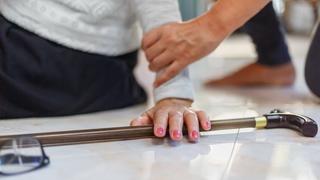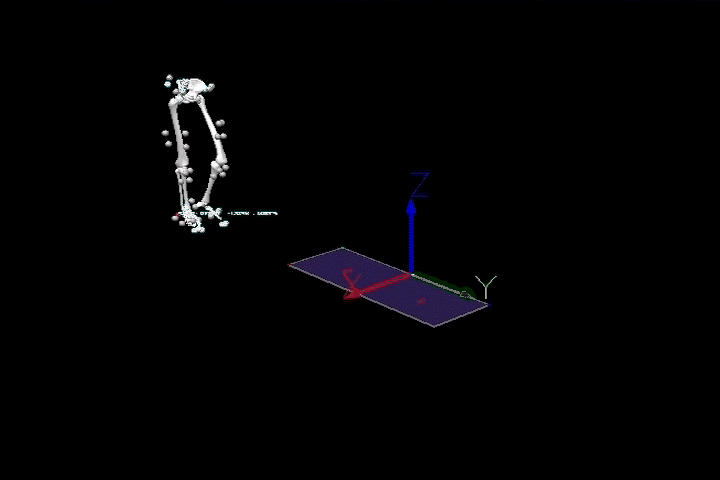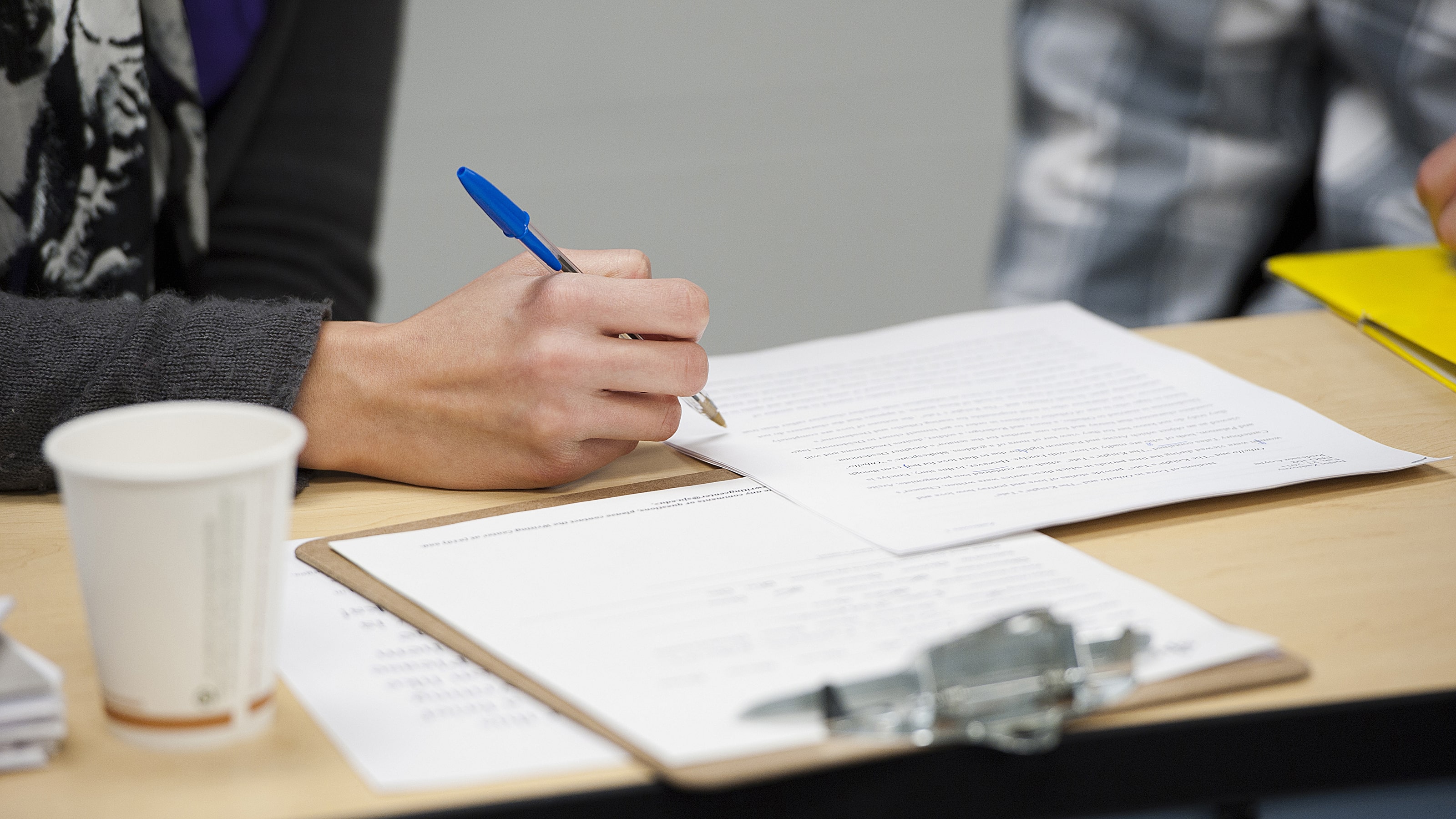Training Your Toes: Faculty, Students Work to Prevent Trips
Faculty and students in Saint Joseph’s Department of Physical Therapy are working on research to help mitigate the occurrence of trips and falls, especially in the elderly.

More than one million people go to the emergency room each year for slip and fall accidents. That’s over 2,000 people every day in the United States alone. While some of us may think of ourselves as particularly accident prone or klutzy, Sylvester Carter, MHS, PhD, CEEAA, assistant professor of physical therapy, measures what exactly is happening to cause that clumsiness.
Part of the story involves toe clearance, or the amount of space between your walking foot and the ground. Carter is conducting research on falls in the elderly that focuses on minimum toe clearance and how much one needs to lift their toes in order to prevent a trip or fall. The study uses markers and motion capture to measure how joints are working in conjunction with toes, feet, knees and hips

“Minimum toe clearance is a point in the walking cycle where your leg is swinging forward, putting your toe just a centimeter or two from the ground,” explains Carter. “And that’s just on a level surface.”
Trips and falls increase when the surface a person is walking on becomes less predictable and, with age comes an increase in toe clearance variability, which predisposes the elderly to trips and falls.
Carter works in his lab with undergraduate students who fix markers on their subjects and use motion capture to record each subject’s natural gait across a level surface. In this way, they can measure the consistency of their toe clearance and how all their other joints are contributing to their cadence.
“Most people, when they come into the lab and get geared up in our markers, they take a lot of selfies,” says Carter. “It’s pretty funny to see all these CGI-type balls all over your body. But it really helps us reconstruct the movement of what’s happening when they walk.”
Woei-Nan Bair, PT, PhD, assistant professor of physical therapy, is taking on similar research, but with a different goal. In her lab, subjects are encouraged to train their reactivity to balance challenges in a controlled, safe environment.
But no matter how you prepare, explains Bair, there are always surprises in life.
“No one can predict when a trip is coming,” says Bair. “When we trip and fall, we have to respond to our environment using our reactive balance. But even if you have wonderful balance when you move, there are no guarantees. What about black ice? What about an uneven curb or someone’s umbrella getting caught in your feet?”
When we trip and fall, we have to respond to our environment using our reactive balance. But even if you have wonderful balance when you move, there are no guarantees.
Woei-Nan Bair, PT, PhD, assistant professor of physical therapy
Bair trains her subjects using a methodology called inoculation where they are able to experience the feeling of a fall in a lab and respond safely. This training increases a subject’s reactive balance for months to come, and Bair studies what the optimal dose of challenges should be through PT sessions.
“Traditional balance training is a very long process,” explains Bair, “which is why people over 65, who need it most, might not be interested in participating. Training reactive balance can really make an exponential difference in how your body responds to abrupt loss of balance.”
As for toe clearance, Carter and his students have more recently honed in on the hip flexor muscle as the main determiner of varied toe clearance. The idea is that retraining the hip flexor muscles can reduce toe clearance inconsistency.
“We want to focus on the hip flexors because that joint seems to be most associated with the variability that we’re seeing,” says Carter. “If you stand up and move your leg forward, as if walking, you can see that your hips are one of the main joints controlling how your leg extends.”
Ciaran Dubeck ‘24 (PT), a physical therapy major who assisted Carter in this project, says this research changed his career path.
“Before I started work with Dr. Carter, I was certain I wanted to work in pediatrics; I had never considered research as a career,” explains Dubeck. “But over the past several months, I’ve grown very fond of working with older adults and the motion analysis we’ve been doing. I enjoyed my time in Dr. Carter’s lab so much that I applied for and accepted a position as an aide in Shriner Hospital’s motion analysis center.”
Ultimately, Carter and his students hope to determine ways that the elderly can strengthen their joints and muscles to achieve better consistency with their toe clearance.
“We still have a lot we need to understand behind the scenes before we start proposing interventions,” says Carter. “There are so many different avenues we could take — resistance training? Walking speeds? It’s too soon to tell.”
In the meantime, more and more physical therapy clinics are turning to inoculation techniques like Bair’s to train reactivity in their patients.
“It takes a lot of specialized equipment,” says Bair. “But the ends justify the means if you ask me.”
If you are 65 or older and interested in joining Dr. Carter’s study, reach out to him directly at scarter@sju.edu.



